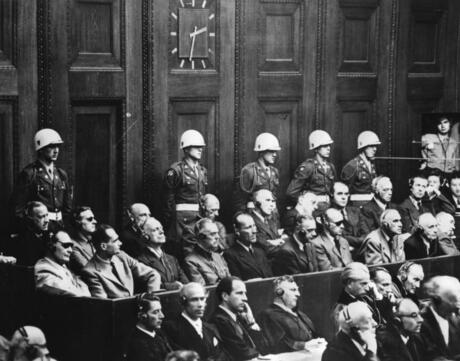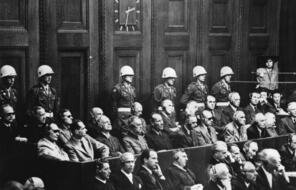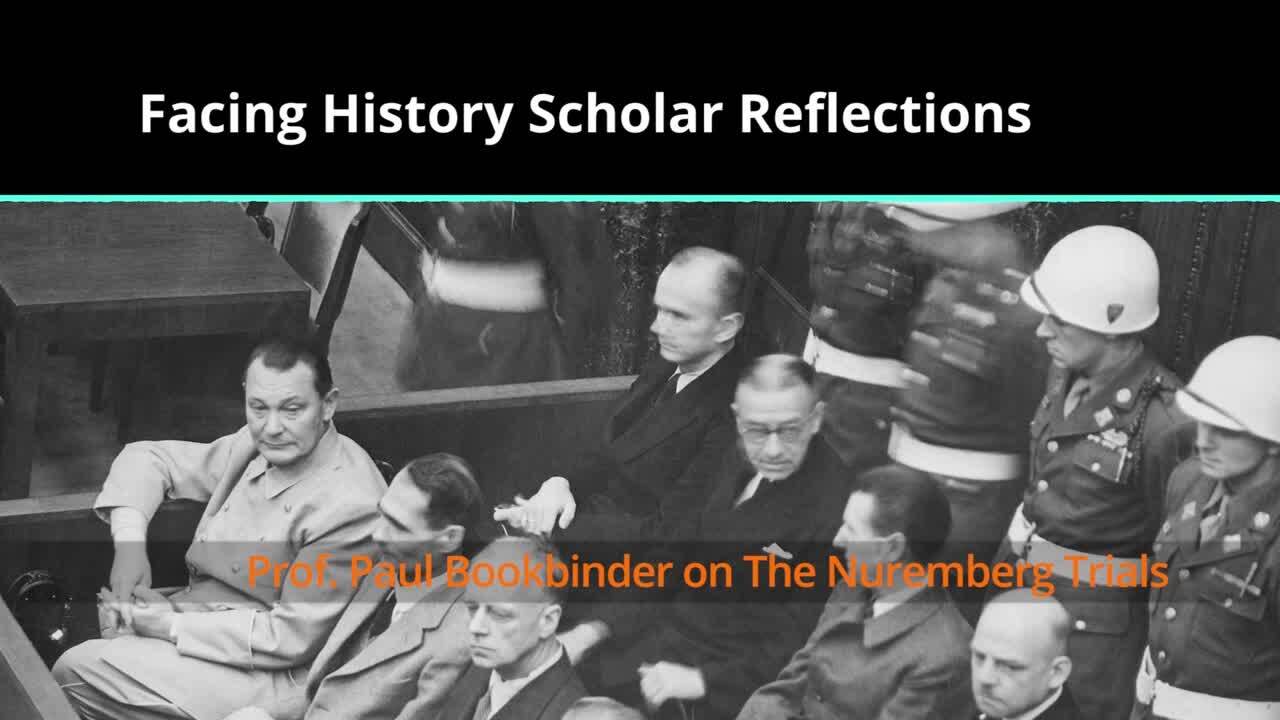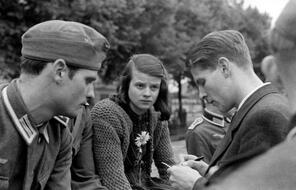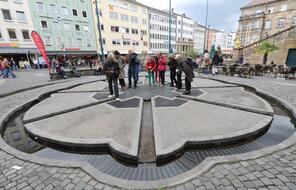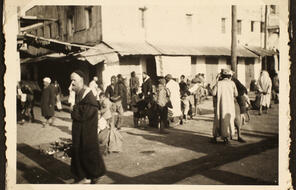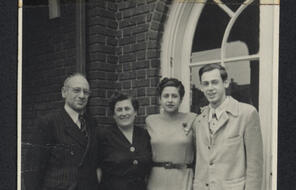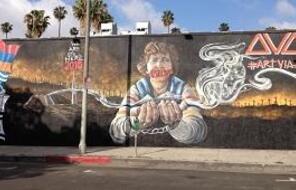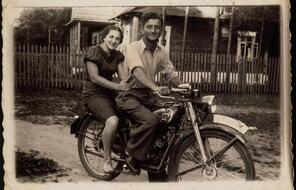What kind of justice is possible after mass murder on a scale never seen before? Legal scholar Martha Minow writes that seeking justice for war and mass atrocities like the Holocaust requires balance between two opposite responses: vengeance and forgiveness. Vengeance, in response to war and genocide, means revenge or retaliation against those who instigated the war and committed atrocities; it is usually carried out by the victims themselves, and it can perpetuate a cycle of violence. Forgiveness has the power to break the cycle of violence, but it often leaves the perpetrators unpunished and it may often be too much to ask of the victims of heinous crimes.
A spectrum of justice lies between the two poles of vengeance and forgiveness. Trials, like those held by the Allies in Nuremberg after the war, occupy one place on that spectrum. At a trial, a court with established rules and procedures is given the responsibility of responding to a crime, rather than the victims themselves. Evidence is presented to prove or disprove that defendants committed the crimes of which they are accused, and they have an opportunity to defend themselves. Perpetrators are punished, but only after their guilt has been proven. Minow writes, ‘Resisting revenge and the continuation of war, the [Nuremberg] tribunal turned to principle, fact-finding, and public debate.’
Long before the war was over, the Allied powers began to discuss how to hold Germany accountable for its wartime actions. They agreed that Germany had violated several internationally accepted rules of war. Germany’s war crimes included its aggressive invasion of other countries, its violation of international treaties, and its inhumane treatment of prisoners of war, hostages, and civilians. Soviet Premier Joseph Stalin suggested executing as many as 50,000 members of the German army. British Prime Minister Winston Churchill was in favour of executing high-ranking Nazi officials without a trial. At the Yalta Conference in February 1945, US President Franklin D. Roosevelt proposed holding international trials for German leaders. Stalin, seeing the propaganda value that public trials would provide, enthusiastically supported the plan. The British, though worried that such trials would simply be seen as ‘victor’s justice’, eventually agreed.
Yet the Allies’ decision to hold trials led to additional dilemmas: who, exactly, should be brought to trial? What crimes, specifically, should the defendants be charged with? Can defendants be held responsible for breaking international laws that did not yet exist when they broke them? After a war, can the victorious nations be trusted to conduct fair trials of the leaders of the nations they fought against and defeated?
In June 1945, after Germany’s surrender, the Allied powers wrote a charter answering many of these questions and establishing an international tribunal, or court, to conduct trials of Germany’s leaders. The charter articulated the crimes for which individuals and corporations could be charged, which included crimes against peace, war crimes, and crimes against humanity. Furthermore, individuals brought to trial could not use the plea that they were following orders as their defence. Most individuals who had participated in the war and mass killings would never be brought to trial. Instead of trying to prosecute everyone who played a part, the tribunal decided to focus on the most prominent Nazi leaders.
In November 1945, the first trial began in Nuremberg. Of the twenty-two men tried, five were military leaders and the rest were prominent German government or Nazi Party officials. The Nuremberg trials addressed all German crimes associated with the Second World War together, not the Holocaust in particular (at that time, the concept of the Holocaust as we know it did not exist). On 1 October 1946, after months of testimony, examination and cross-examination of the defendants, and deliberation by the judges from the four Allied powers who presided over the trials, the verdicts were announced. Twelve defendants received a death sentence, three were sentenced to life in prison, four received prison terms ranging from ten to twenty years, and three of the defendants were acquitted.
After the first trial ended in October 1946, the United States held twelve other trials at Nuremberg under the authority of the International Military Tribunal. Among those brought to trial were top military leaders, high-ranking SS and other police officers, leaders of the mobile killing units (the Einsatzgruppen), doctors who participated in the Nazi medical killing programme, and officials of other Nazi organisations that engaged in racial persecution.
The Nuremberg trials were not without controversy. Some people argued that it was unfair to indict Nazi leaders for violating laws that had not yet existed at the time they committed the acts of which they were accused. This is called ex post facto (‘after the fact’) justice, and it is specifically forbidden by the laws of many nations. Others worried that the trials would result in a ‘victor’s justice’ in which the Allied powers would impose their own laws to indict those individuals charged with crimes. Today, the Nuremberg trials are viewed largely as an effort by the Allies to, in the words of American Nuremberg prosecutor Robert Jackson, ‘stay the hand of vengeance and voluntarily submit their captive enemies to the judgment of law’.
The trials and the judgments that were reached after the war in courtrooms in Nuremberg gave life to long-standing international laws and inspired new ones over time. Each of the trials was intended to give expression to the horror of the crimes and the pain of the victims. The trial proceedings were made public so that people could not only learn but also judge for themselves what had happened and whether justice was done. The evidence was recorded, and every judgment included the reasoning it was based on, so that the truth could be established and tested and retested over time.
US Supreme Court Justice Stephen Breyer has observed that when we learn about the Holocaust, ‘We think: There are no words. There is no compensating deed. There can be no vengeance. Nor is any happy ending possible.’ But Nuremberg ‘reminds us of those human aspirations that remain a cause for optimism. It reminds us that after the barbarism came a call for reasoned justice.’
Studying this call and evaluating its successes and its difficulties allows us to reflect more deeply on the complexity of human behaviour, the possibility of judging today the choices made by people in past generations, and the existence of universal standards of right and wrong.
